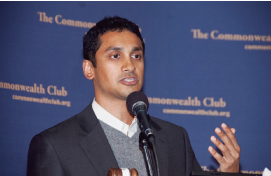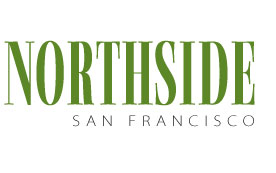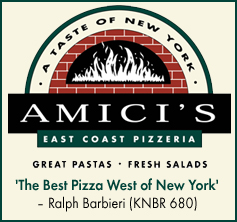
Kiva president Premal Shah
photo: Beth Byrne
Would you rather destroy a bank or become one? A financial industry blogger using the pseudonym “Edmundo Braverman” has been peddling his plan to take down one of the big U.S. banks in retribution for the recent financial panic. It’s a far-fetched plan that is arguably unworkable, but it has been receiving a lot of attention, including from The New York Times and other national media.
But as alluring as Braverman’s caper might be to some angry citizens, another option exists: become a banker yourself. No, not in the sense of accepting deposits and giving away toasters. Rather, you can be the lender to small business people near and afar, even successfully lending money to people who wouldn’t qualify for a loan from the drunkest bank loan officer.
You would be helping people who are considered too poor for a traditional loan, or who have no credit history, or who live in countries where credit is rare and many borrowers – especially poor women – are not taken seriously as business investments. And you can do it from your home computer.
Many thousands of people have become this type of friendly banker by using the San Francisco-based nonprofit website Kiva.org, where they can pick the borrowers to whom they want to make loans. Those who are seeking investments to start or expand business ventures post profiles of themselves and what they want funded.
“Say a woman in Uganda wants to buy a cow to start a dairy business,” Kiva’s president Premal Shah told me during a recent visit to The Commonwealth Club. “You can make a loan in $25 increments to help support that business. Then when you get the money back, you can choose to relend that money to somebody else – so that $25 now can help someone maybe in Cambodia – or you can pull that money out of the system.”
Since its 2005 launch, Kiva has facilitated loans totaling more than $177 million. The lenders do not earn interest, but unlike a purely philanthropic gift, the money can be relent over and over again, helping many borrowers.
That $25 obviously goes a lot further in a developing country than it would in the United States. Shah says that the average loan on Kiva to U.S. borrowers is $7,000; its average loan worldwide is just $400.
Kiva borrowers are found all around the globe, including right here in the Bay Area. That means instead of being like a bank, you can be like investor Warren Buffett. The Omaha-based billionaire famously eats at Dairy Queen and drinks Cherry Coke because of his investments in those two companies.
Kiva lenders in the Bay Area are able to do much the same thing, says Shah. The lenders can visit the local businesses to which they lent money, or communicate with them via e-mail (which is not always
an option for a business in, say, Uganda).
“We’re starting to see interactions where a small business owner will be looking for computers to expand their business. In addition to getting a loan, somebody might actually ship them computers,” says Shah. “There’s a small business here in San Francisco – a board game store – and they were listed on the Kiva website [seeking a loan]. A lot more people actually went to the store. The Yelp reviews cross-post to Kiva. It’s really interesting how, in a networked world, one of the biggest problems for businesses is actually getting customers. By being listed on Kiva, there’s this opportunity for you to not only lend locally, but also buy locally. We’re seeing this emerge more and more.”
He calls it a logical extension of Kiva that ties lenders to the entrepreneurs seeking their investments. “You could fund a bakery in the Tenderloin, you could fund a salon in Oakland, and literally visit and frequent these businesses and help drive a lot more economic vitality to these places,” Shah says.
Unlike in blogger Edmundo Braverman’s plan, banks are free from destruction by the likes of Kiva. The nonprofit website and banks tend to complement each other more than they compete for loan customers, with Kiva reaching people beyond the reach of banks, getting inclusive financial services “to the most rural, remote, marginalized people on the planet,” as Shah says.
“I honestly believe that our competition is for people’s mindshare,” says Shah. “If I look at where people are spending their time that I would love to compete with, it’s with people who play Farmville on Facebook. Every month, 60 million people are building these virtual farms on Facebook, and every month about 60,000 people are making loans [on Kiva] to support real farms. So the question is, how does Kiva make philanthropy that fun, compelling, addictive?”
With Kiva’s lending total growing at a rate of about $1 million every six days, clearly plenty of people already find it compelling.
John Zipperer is vice president of editorial and media at The Commonwealth Club of California, www.commonwealthclub.org. E-mail: johnz@northsidesf.com








